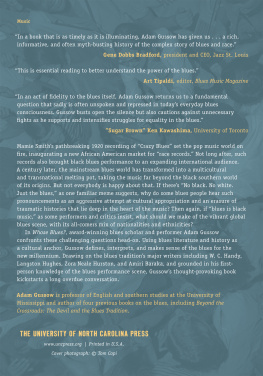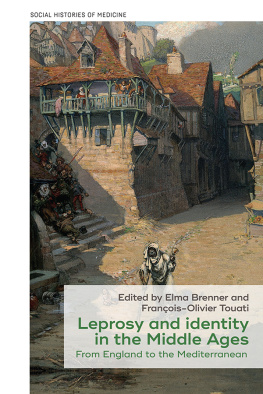Zachary Gussow - Leprosy, Racism, And Public Health
Here you can read online Zachary Gussow - Leprosy, Racism, And Public Health full text of the book (entire story) in english for free. Download pdf and epub, get meaning, cover and reviews about this ebook. year: 1989, publisher: Avalon Publishing, genre: Science. Description of the work, (preface) as well as reviews are available. Best literature library LitArk.com created for fans of good reading and offers a wide selection of genres:
Romance novel
Science fiction
Adventure
Detective
Science
History
Home and family
Prose
Art
Politics
Computer
Non-fiction
Religion
Business
Children
Humor
Choose a favorite category and find really read worthwhile books. Enjoy immersion in the world of imagination, feel the emotions of the characters or learn something new for yourself, make an fascinating discovery.

- Book:Leprosy, Racism, And Public Health
- Author:
- Publisher:Avalon Publishing
- Genre:
- Year:1989
- Rating:3 / 5
- Favourites:Add to favourites
- Your mark:
- 60
- 1
- 2
- 3
- 4
- 5
Leprosy, Racism, And Public Health: summary, description and annotation
We offer to read an annotation, description, summary or preface (depends on what the author of the book "Leprosy, Racism, And Public Health" wrote himself). If you haven't found the necessary information about the book — write in the comments, we will try to find it.
Leprosy, Racism, And Public Health — read online for free the complete book (whole text) full work
Below is the text of the book, divided by pages. System saving the place of the last page read, allows you to conveniently read the book "Leprosy, Racism, And Public Health" online for free, without having to search again every time where you left off. Put a bookmark, and you can go to the page where you finished reading at any time.
Font size:
Interval:
Bookmark:


605 Third Avenue, New York, NY 10017
2 Park Square, Milton Park, Abingdon, Oxon OX14 4RN
Gussow, Zachary, 1923
Leprosy, racism, and public health: social policy in chronic
disease control / Zachary Gussow.
p. cm.
Includes index.
ISBN 0-8133-0674-4
1. LeprosySocial aspectsUnited StatesHistory. 2. Leprosy
Government policyUnited StatesHistory. 3. RacismUnited
StatesHistory. I. Title.
[DNLM: 1. Leprosyhistory. 2. Leprosyprevention & control.
3. Prejudice. 4. Public Healthhistory. 5. Public Policy. WC
335 G982L]
RA644.L3G878 1989
362.1'96998'0097dc19
DNLM/DLC
for Library of Congress 88-5567
CIP
Chairman, Department of Psychiatry, Louisiana State University Medical Center, and Assistant to the Chancellor, 1957-1974
- 1 Symbol and Disease
- PART 2 THE WESTERN WORLD IN TRANSITION: THE NINETEENTH CENTURY
- 2 The Port City of New Orleans: A Necropolis
- 3 Endemicity in the United States: Leprosy in Louisiana
- 4 Norway: The Enlightened Kingdom
- 5 Hawaii: An Imperialist Solution
- PART 3 THE PERIOD OF ALARM: TURN OF THE CENTURY
- 6 Changing American Images of the Chinese
- 7 Beginnings of a U.S. National Leprosarium
- PART 4 THE LEPROSARIUM: THE TWENTIETH CENTURY
- 8 The Carville Leprosarium: The Asylum Years, 1894 to Post-World War II
- 9 The National Hansen's Disease Center: New Managers and Old Habits
- PART 5 CONCLUSION
- 10 The Secularization of Leprosy
- 1 Symbol and Disease
- PART 2 THE WESTERN WORLD IN TRANSITION: THE NINETEENTH CENTURY
- 2 The Port City of New Orleans: A Necropolis
- 3 Endemicity in the United States: Leprosy in Louisiana
- 4 Norway: The Enlightened Kingdom
- 5 Hawaii: An Imperialist Solution
- PART 3 THE PERIOD OF ALARM: TURN OF THE CENTURY
- 6 Changing American Images of the Chinese
- 7 Beginnings of a U.S. National Leprosarium
- PART 4 THE LEPROSARIUM: THE TWENTIETH CENTURY
- 8 The Carville Leprosarium: The Asylum Years, 1894 to Post-World War II
- 9 The National Hansen's Disease Center: New Managers and Old Habits
- PART 5 CONCLUSION
- 10 The Secularization of Leprosy
- xiv
| Tables |
| 2.1 Cost of acclimation: Showing the life cost of acclimation; or liabilities to yellow fever from nativity, as exhibited by the epidemic of 1853, in New Orleans |
| 3.1 A list of cases recorded in such annual reports of the Charity Hospital, New Orleans, as have been preserved |
| 5.1 The nationalities of the population at all the census dates from 1866 onward |
| Figures |
| 4.1 Course of leprosy in Norway from 1856 to 1927 |
| 4.2 Number of new cases in five-year periods from 1857 to 1925 |
| 5.1 Leprosy in Hawaii: Cases segregated by years, 1866-1905 |
| 6.1 Number of references to leprosy in index to the London Times, 1870-1930 |
Font size:
Interval:
Bookmark:
Similar books «Leprosy, Racism, And Public Health»
Look at similar books to Leprosy, Racism, And Public Health. We have selected literature similar in name and meaning in the hope of providing readers with more options to find new, interesting, not yet read works.
Discussion, reviews of the book Leprosy, Racism, And Public Health and just readers' own opinions. Leave your comments, write what you think about the work, its meaning or the main characters. Specify what exactly you liked and what you didn't like, and why you think so.










